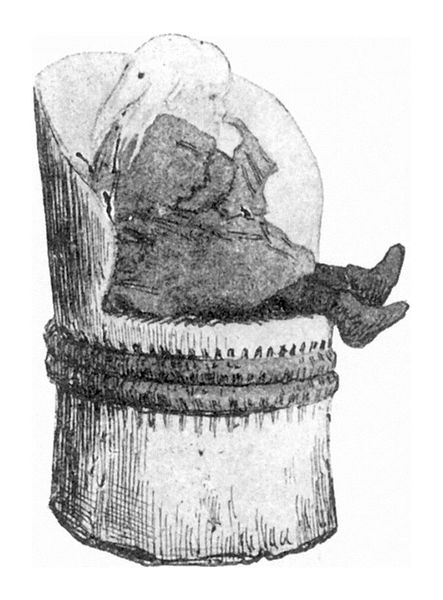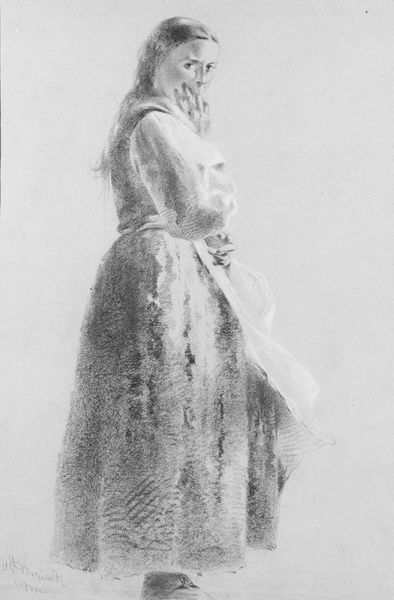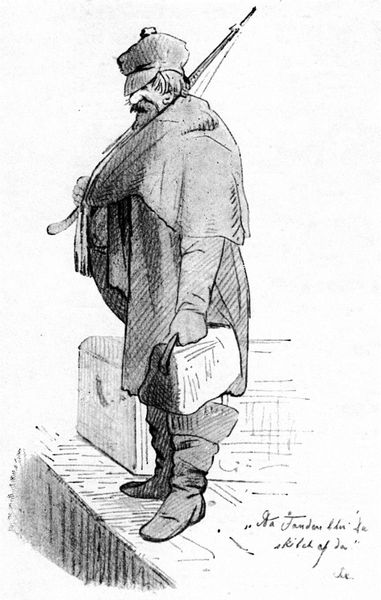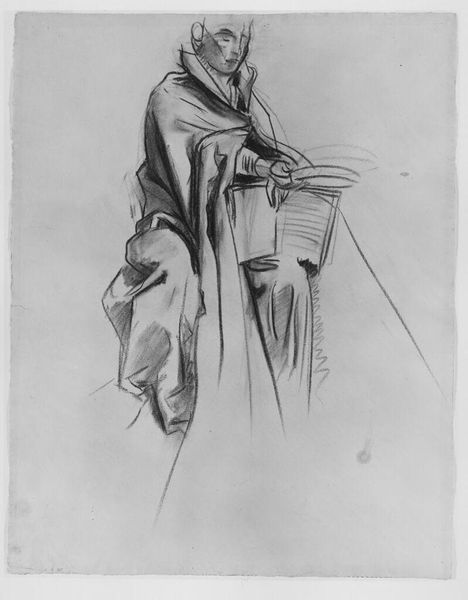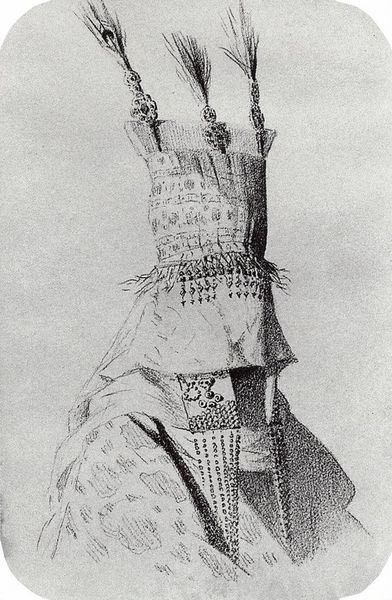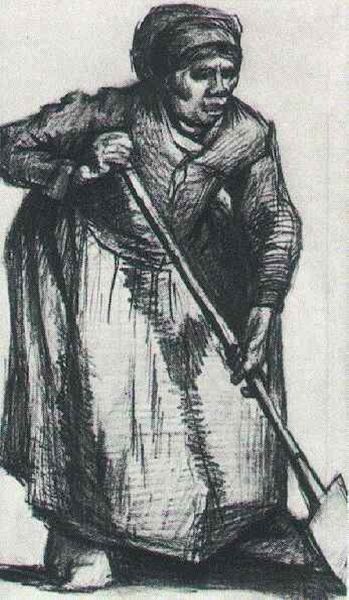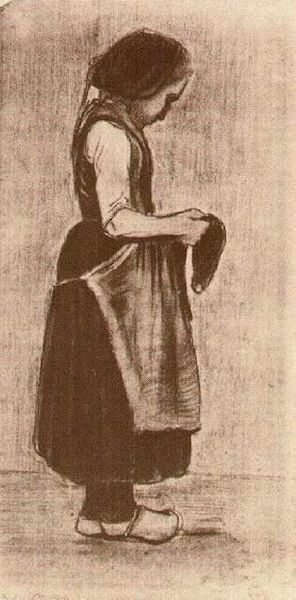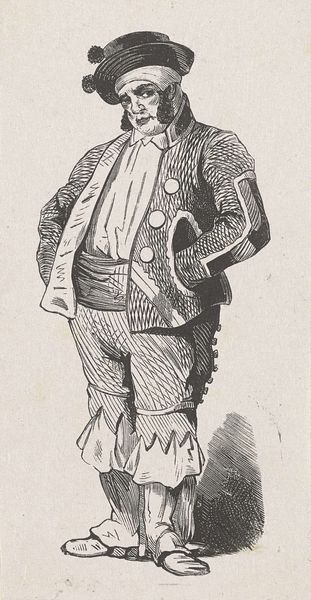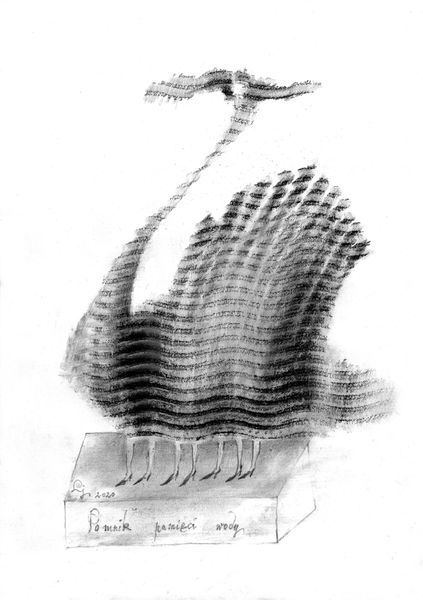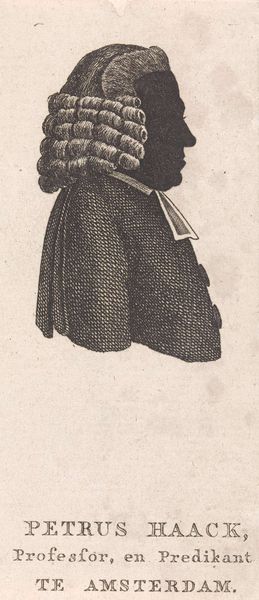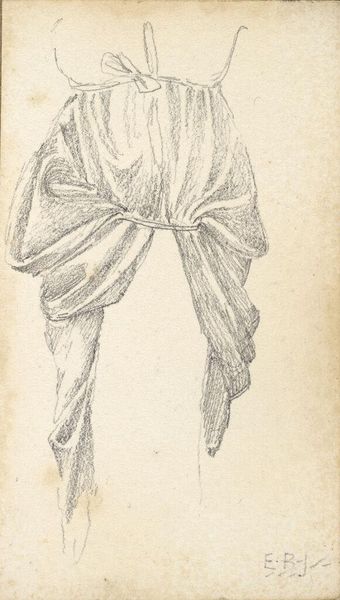
drawing, pencil
#
pencil drawn
#
drawing
#
fairy-painting
#
pencil sketch
#
old engraving style
#
figuration
#
romanticism
#
pencil
Copyright: Public domain
Curator: This captivating piece is an untitled pencil drawing by Theodor Severin Kittelsen. It presents a child seated in a rather unusual chair. Editor: It gives me an immediate sense of childlike solitude, maybe even a touch of melancholy. The stark monochrome adds to the mood, and that chair… it looks like something between furniture and a protective barrier. Curator: Interesting. To me, the chair feels almost throne-like, suggesting a sort of introspective sovereignty. Note how Kittelsen utilizes the linearity of the medium to capture shadow and light in a way that adds dimensionality and emphasizes the subject's posture. This could evoke universal themes of authority, self-reflection, and isolation of childhood imagination, a fairytale world where interiority becomes a dominion. Editor: The lack of surrounding context—a simple, unadorned space—enhances the introspective element, and given the period, late 19th-century Norway, the symbolism perhaps extends to broader societal constraints imposed particularly on young girls in a patriarchal society, the solitude turning not entirely by choice. Does her contemplative pose invite consideration of these limitations, offering a subtle commentary? Curator: I appreciate that feminist reading. I think Kittelsen uses the visual grammar of romanticism here to draw our attention toward the experience of inwardness. Her body language appears contained; her shoulders round inwards toward the neck, while her fingers barely touch the lip. Such body-bound containment indicates potential trauma experienced in childhood and evokes psychological and physical tension. Editor: Yes, the body language feels pivotal; the averted gaze, the compressed posture—this resonates strongly with my reading, hinting at repressed emotions and a quiet rebellion against external constraints placed on women in the 19th century. And you see a reflection of the psychological realities too; I think we're on the same wavelength, looking through our lenses! Curator: It’s in these symbols, the universal experience and intimate symbolism intertwined, that art truly reveals itself. It asks, “What does childhood imagination allow? And from what trauma does childhood offer as protection?" Editor: I concur; viewing Kittelsen’s untitled piece, one can begin to appreciate how visual artworks embody so many rich social and political connotations. The emotional complexities and structural oppression implicit in the imagery offers not merely one point of view, but the chance for myriad interpretations of power dynamics across a century.
Comments
No comments
Be the first to comment and join the conversation on the ultimate creative platform.
